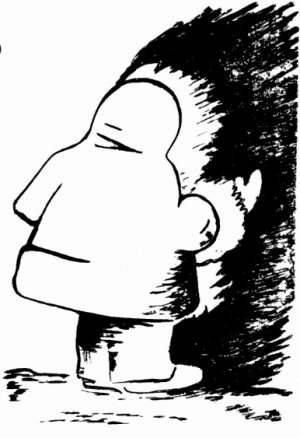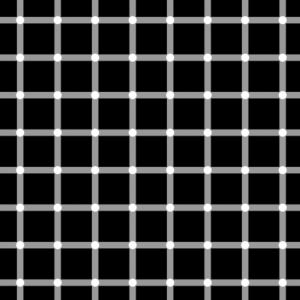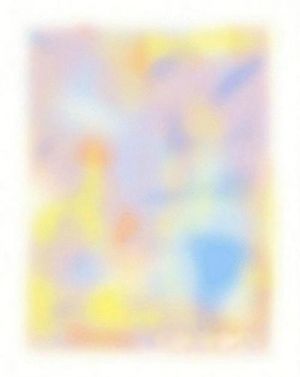Optical Illusions: Difference between revisions
No edit summary |
(→Effect) |
||
| Line 1: | Line 1: | ||
Optical illusions are a great initiation point for people to start to explore [[Pivotal Mental States]]. Optical illusions provide the observer a quirk of perception which may seem strange at first however they can often be explained from a evolutionary psychology perspective. | [[File:Gestalt switch.png|alt=Gestalt switch|thumb|'''Figure 1'''. Gestalt Switch - ''Can you see the Eskimo?'']]Optical illusions are a great initiation point for people to start to explore [[Pivotal Mental States]]. Optical illusions provide the observer a quirk of perception which may seem strange at first however they can often be explained from a evolutionary psychology perspective. | ||
== Gestalt Switch == | == Gestalt Switch == | ||
In psychology, a Gestalt Shift ('''Figure 1''') is when a person's perception suddenly changes. When this state locks into one perspective this is termed a ‘paradigm shift’. | In psychology, a Gestalt Shift ('''Figure 1''') is when a person's perception suddenly changes. When this state locks into one perspective this is termed a ‘paradigm shift’. | ||
=== Effect === | === Effect === | ||
Note how the dark patch on the right of the image can be darkness into which an Eskimo is facing (with his or her back to the view) or the hair on top of the face of a person who is facing to the left. You should experience a 'Gestalt Switch' between seeing the figure as an Eskimo or a face. | |||
=== Mechanism === | === Mechanism === | ||
[[Framing]] can initially induce you | [[Framing]] or [[priming]] can initially induce you to initially see either the eskimo or the face. | ||
== Grid Illusion or ''Scintillating Grid'' == | == Grid Illusion or ''Scintillating Grid'' == | ||
Revision as of 01:26, 15 August 2022
Optical illusions are a great initiation point for people to start to explore Pivotal Mental States. Optical illusions provide the observer a quirk of perception which may seem strange at first however they can often be explained from a evolutionary psychology perspective.
Gestalt Switch
In psychology, a Gestalt Shift (Figure 1) is when a person's perception suddenly changes. When this state locks into one perspective this is termed a ‘paradigm shift’.
Effect
Note how the dark patch on the right of the image can be darkness into which an Eskimo is facing (with his or her back to the view) or the hair on top of the face of a person who is facing to the left. You should experience a 'Gestalt Switch' between seeing the figure as an Eskimo or a face.
Mechanism
Framing or priming can initially induce you to initially see either the eskimo or the face.
Grid Illusion or Scintillating Grid
The scintillating grid is a simultaneous lightness contrast illusion (Figure 2).
Effect
Dots which are not centred in your visual field should appear to flash from black to white, in a 'scintillating' effect.
Mechanism
It is thought the reason for the illusion is physiological. The mechanism proposed by Baumgartner (1960) detailed that the effect might be due to inhibitory processes in the retinal ganglion cells, the neurons that transmit signals from the eye to the brain. To each cell there corresponds a small region of the retina called the receptive field, where photoreceptive rods and cones can trigger an electrical response in that cell. The receptive fields of adjacent ganglion cells may overlap.
Troxler Effect
Firmly fixating one's focus on a stationary object in the visual field can cause the surrounding visuals to appear to fade or slowly vanish (Figure 3).
Effect
Keep very still and keep your gaze focused on the central area of the image. Do not strain your eyes, but try not to let your gaze wander from the centre.
Mechanism
The Troxler effect illustrates the importance of saccades, the involuntary movements of the eye which occur even while one’s gaze is apparently settled.


